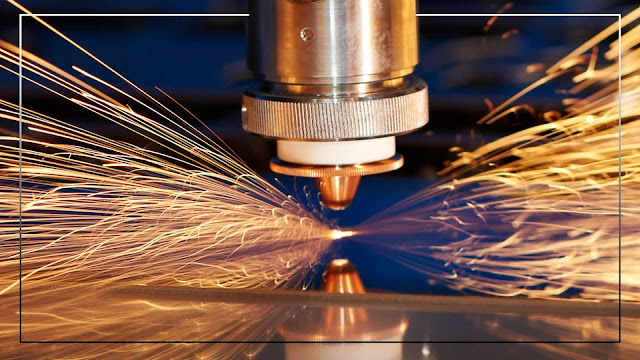 |
| Laser Processing |
Flexible electronics have revolutionized the field of technology by offering lightweight, bendable, and stretchable devices. These flexible components, such as displays, sensors, and batteries, require precise manufacturing techniques to ensure their functionality and durability. Laser processing has emerged as a key technology in the fabrication of flexible electronics, enabling the creation of intricate patterns, precise material removal, and selective deposition. Let's delve into the world of laser processing for flexible electronics and explore its remarkable capabilities.
In the realm of
flexible electronics, Laser
Processing
plays a pivotal role in the fabrication of conductive patterns. By
employing laser ablation, thin metal films can be selectively removed from
flexible substrates to create intricate circuit patterns. This process
eliminates the need for traditional photolithography, which involves complex
and time-consuming steps. With this, manufacturers can achieve high resolution
and accuracy, resulting in well-defined conductive traces. The non-contact
nature of lasers ensures that delicate and flexible substrates remain intact
during the fabrication process, reducing the risk of damage.
Another significant
application of Laser Processing in
flexible electronics is the selective laser sintering of conductive inks.
Conductive inks, composed of metallic nanoparticles, are widely used in the
printing of electronic circuits on flexible substrates. This can effectively
heat and fuse these nanoparticles, creating conductive paths with high
electrical conductivity. By selectively applying laser energy to specific
areas, manufacturers can precisely control the sintering process and achieve
desired electrical properties. This technique enables the rapid prototyping and
customization of flexible electronic devices, facilitating the development of
innovative and personalized products.
Laser processing contributes to the manufacturing of flexible displays,
a cornerstone of modern technology. Laser annealing, a process that involves
controlled heating of thin films, is utilized to enhance the electrical and
optical properties of display components. By subjecting the thin film
transistors (TFTs) to a laser beam, the semiconductor material is crystallized,
resulting in improved carrier mobility and faster response times. Laser
annealing ensures uniform heating, reducing the risk of thermal damage to the
flexible substrates. This technique is vital in the production of
high-resolution and high-performance flexible displays, enabling vibrant
visuals and seamless user experiences.
Laser Processing has emerged as a transformative
technology in the realm of flexible electronics. Its ability to create
intricate patterns, selectively remove or deposit materials, and enhance device
properties has revolutionized the manufacturing process. This enables the
fabrication of flexible circuits, the sintering of conductive inks, and the
optimization of display components. As the demand for lightweight and flexible
electronic devices continues to grow, laser processing will undoubtedly play a
pivotal role in shaping the future of technology.
